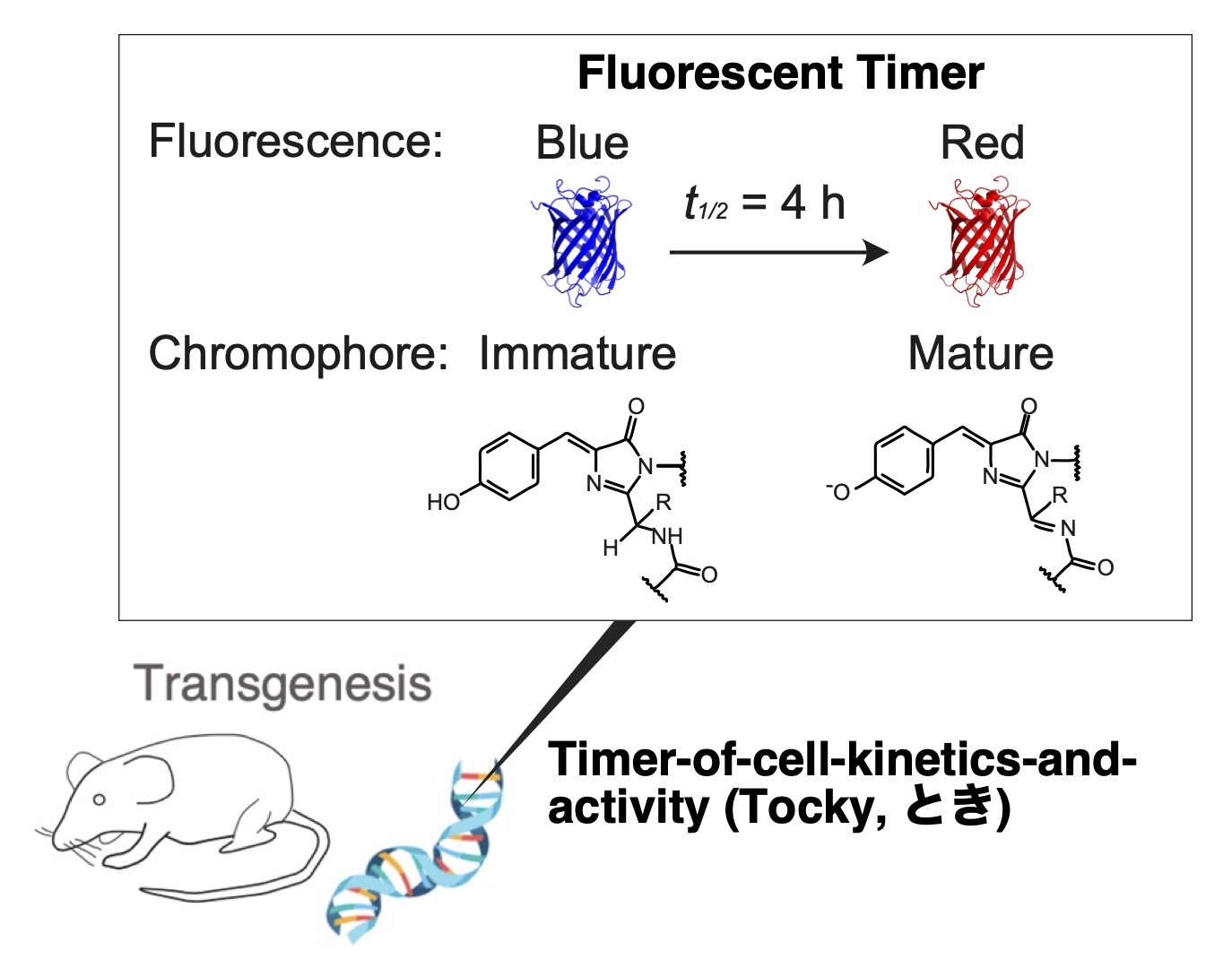1
"Unraveling T-cell dynamics using fluorescent timer: Insights from the Tocky system" by Masahiro Ono is published in BPPB as the J-STAGE Advance Publication.
2024 February 16 BPPB
A following article is published as the J-STAGE Advance Publication in "Biophysics and Physicobiology".
Masahiro Ono
"Unraveling T-cell dynamics using fluorescent timer: Insights from the Tocky system"
URL:https://doi.org/10.2142/biophysico.bppb-v21.s010
- Abstract
- Understanding the temporal dynamics of T-cell transcription is crucial for insights into immune cell function and development. In this study, we show the features of the Timer-of-Cell-Kinetics-and-Activity (Tocky) system, which enables analysis of temporal dynamics of cell activities and differentiation, leveraging Fluorescent Timer protein, which spontaneously changes its emission spectrum from blue to red fluorescence in known kinetics, as reporters. The current study examines the properties of the Tocky system, highlighting the Timer-Angle approach, which is a core algorithm of Tocky analysis and converts Timer Blue and Red fluorescence into Timer Angle and Intensity by trigonometric transformation. Importantly, Tocky analyzes time-related events within individual cells by the two phases of measurements, distinguishing between (1) the temporal sequence of cellular activities and differentiation within the time domain, and (2) the transcription frequency within the frequency domain. The transition from time measurement to frequency analysis, particularly at the Persistent locus that bridges these domains, highlights that system’s unique property in what is measured and analyzed by Tocky. Intriguingly, the sustained transcriptional activities observed in cells at the Persistent locus may have unique biological features as demonstrated in activated regulatory T-cells (Treg) and pathogenic T-cells, respectively, using Foxp3-Tocky and Nr4a3-Tocky models. In conclusion, the Tocky system can provide crucial data for advancing our understanding of T-cell dynamics and function.





